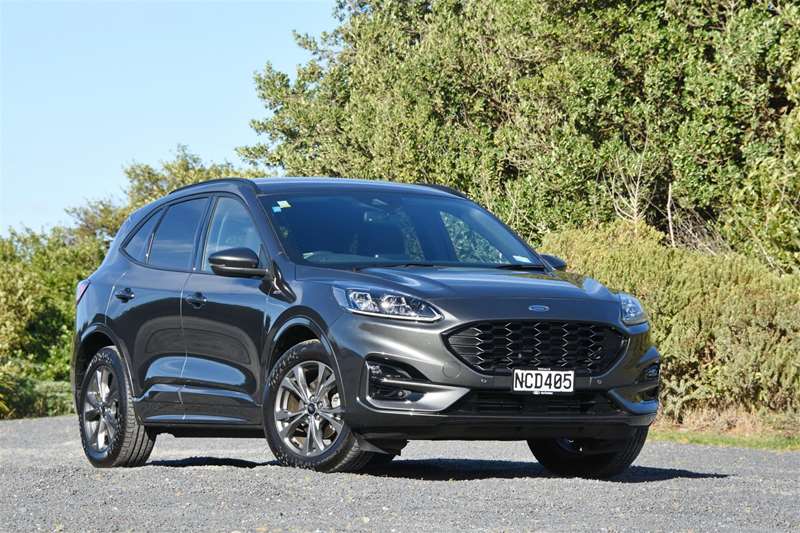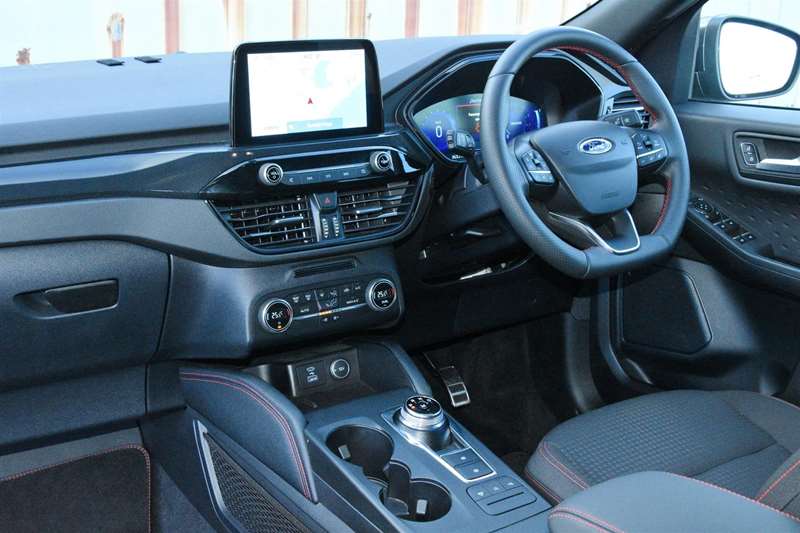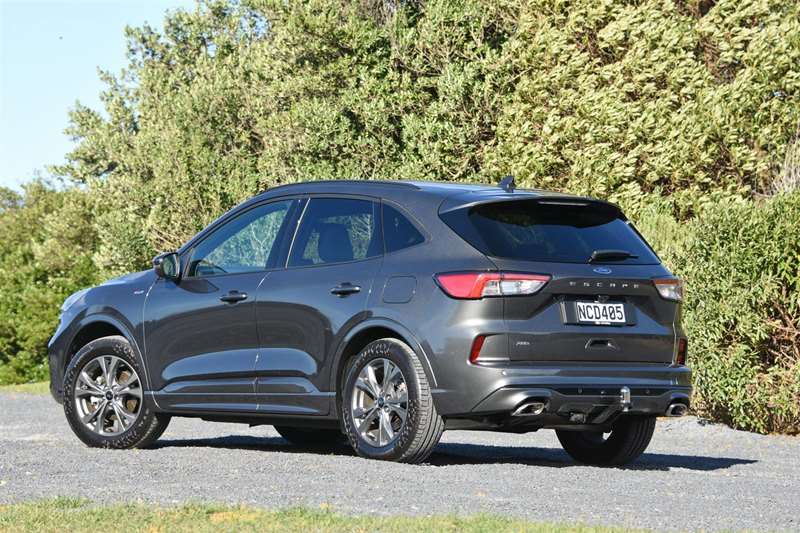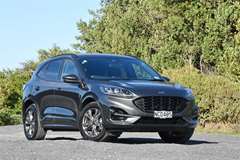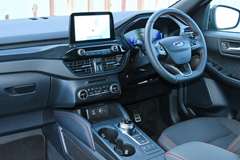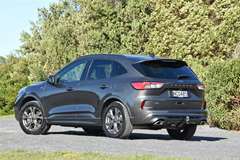David Thomson takes Ford’s latest mid-sized SUV for an extended run on local roads.
What’s new?
Sitting between the Puma and Everest, the Escape is Ford’s current mid-sized SUV option. Offered in both front- and all-wheel-drive guise, and with a plug-in hybrid variant on the way, it’s a likely rival to vehicles such as the Kia Sportage, Mazda CX-5 and Toyota RAV4.
Completely different from the Escape of old, this latest model was launched late last year, about the same time as the latest Puma. And like the Puma, it’s based on a conventional car platform, in this case that of the current Ford Focus.
Later this year, the Escape will become the first model in Ford’s current SUV line to be offered with a hybrid powertrain.
For now, the Escape line-up is pure-petrol, comprising four variants, each powered by a 183kW/387Nm turbo-charged petrol engine mated to an 8-speed automatic transmission.
The opening two variants are front-drive only, with the standard EcoBoost FWD priced at $42,990, and the ST-Line FWD at $47,990. The four-wheel-drive options comprise the $50,990 ST-Line AWD (as tested) and $55,990 ST-Line X AWD.
What’s it like to look at?
This new Escape shrugs off the square-edged slab-sided look of previous generations to adopt a more curvaceous and car-like form.
There’s significant sculpting of the side panels, a stylish and contemporary dropping roofline, and a pronounced upwards rake along the window line. The grille is similar to that of the current Focus and there are marked similarities in the treatment of the front light clusters and air intakes too. Similarities, though less pronounced, are also apparent around the tail.
LED exterior lights are provisioned across the range, while ST-Line variants take a special body kit that features various items, including a larger rear wing and black roof rails. The ST-Line sits on a lowered sports suspension and 18-inch alloys with 225/60 tyres, whereas the standard EcoBoost runs 17-inch rims, and the flagship ST-Line X is fitted with 19-inch wheels.
An oddity is that the basic front-drive Escape’s 191mm ground clearance is superior to the 178mm of the ST-Line AWD. Mind you, with its space-saver spare wheel and fully-automated all-wheel-drive system, the ST-Line AWD is in no way a serious off-roader.
What’s it like inside?
The front of the cabin draws heavily on the Focus, with the most striking likenesses being in the design of the dashboard and key elements of the centre console. All models feature an 8-inch colour touchscreen standing proud on the centre of the dash, and a large rotary knob on the centre console replaces a conventional gear lever.
The ST-Line takes a fully digital main instrument cluster and paddle shift controls, along with a sports steering wheel, alloy pedals, and LED ambient lighting. A handy storage compartment at the base of the centre console provides a wireless phone charge pad along with USB, USB-C and 12V plug points. There’s also a decent-sized centre bin, large door bins and a generous glove box.
Soft-touch surfaces feature on key trims, and there are textured door inserts, patterned seat inserts and red contrast stitching. However, with gloss-black trim inserts, minimal use of metallic highlighting to contrast, and dark upper trims, the cabin lacks visual impact.
The front seats are set quite high, even with the height adjustable seats as low as possible. While that stands in the way of a sporty driving position, it ensures good visibility from the broad and reasonably supportive driver’s seat.
Mounted on adjustable rails and adjusting for back angle too, the rear seats are comfortable, but the absence of a fold-down rear centre arm rest is a striking omission. On the other hand, rear leg and headroom is class-leading, and the provision of rear USB and USB-C plug points and adjustable rear air vents are all positives.
The boot does not look especially large, and while Ford quotes a 556-litre capacity, that is achieved with the boot loaded to the roof, the rear seat positioned well forward and seat back quite upright. Levers on either side of the boot can be pulled to drop the rear seat and create an extended flat-floored luggage space with a 1478-litre capacity.
What comes as standard?
The base-level Escape specification includes satellite navigation with speed sign recognition, dual-zone climate control, Ford’s Sync3 infotainment system, FordPass connectivity, smartphone mirroring and front and rear parking sensors. The standard safety package is fairly comprehensive too, with a listing that includes adaptive radar cruise control, auto-dipping headlights, lane keeping assist, blind spot monitoring with rear cross traffic alert, forward collision warning, autonomous emergency braking (with cyclist and pedestrian detection), and a driver impairment monitor.
The ST-Line as tested adds rain-sensing wipers, keyless entry with push-button start, sports suspension and tyre pressure monitoring, along with the fully digital instrument cluster and other features mentioned earlier.
The flagship ST-Line X adds a 10-speaker premium sound system, head up display, parking and surround view cameras, a hands-free power tailgate, quad-beam LED headlights and advanced self-parking.
What’s it like to drive?
The test car’s high-set driving position made it feel like a taller vehicle from behind the wheel around town than it actually is. This feature counts as a positive rather than a negative due to the excellent visibility achieved. Light controls, particularly the steering, enhances the urban motoring experience, along with the engine’s responsiveness even at modest throttle openings.
When the chance comes to work the engine harder beyond city limits, it impresses for its muscular character; its peak outputs of 184kW and 387Nm are very strong for a vehicle of this type, and with that peak torque arriving at 3100rpm, it is notably solid in the mid-range. The eight-speed gearbox is well matched to the engine too, and while having paddle shift controls and a manual shift mode comes in handy in specific situations, there is little need to override the transmission’s own shift decisions in everyday motoring.
I tried the Escape’s sport mode, but to be honest there is ample pep in normal mode, and even Eco modes. The slippery surface and deep snow/sand modes, selected using the same mode select button, did prove handy on test, making the vehicle notably more stable during an extended spell of driving on flowing and sometimes quite corrugated gravel, in South Otago.
As an aside, the main instrument cluster displays change automatically when a different drive mode is selected and can be customised manually.
The excellence of some of the new driver support systems is also worth noting: fiddly radio-station finding set-up aside, the Sync3 infotainment interface is first rate; the satellite navigation navigated me to the rural address of friends that confuses many other such systems; the adaptive cruise control is better than most; and the lane-keeping assistance was genuinely useful without being overly intrusive.
Having been impressed by the Ford Puma’s sharply honed handling dynamics a few weeks previously, it was interesting to find that the Escape — even on the ST-Line’s sports suspension
— does not deliver anything like the same level of driver engagement. Rather, it provides a much more conventional mid-sized crossover SUV experience: competent and surefooted through twists and turns for sure but also a little soft in a set-up that prioritises ride comfort over crisp handling.
That’s by no means all bad, mind. The test car rode exceptionally well in all situations and managed heavily corrugated gravel roads with aplomb both in terms of comfort and smooth power delivery. Road noise, on the other hand, could be better contained.
Verdict
Neatly styled, roomy, and offering zesty performance, the new Escape provides Ford with something it has not previously had; a mid-sized crossover SUV that is fully competitive with the best of its rivals.
- Photos: David Thomson
